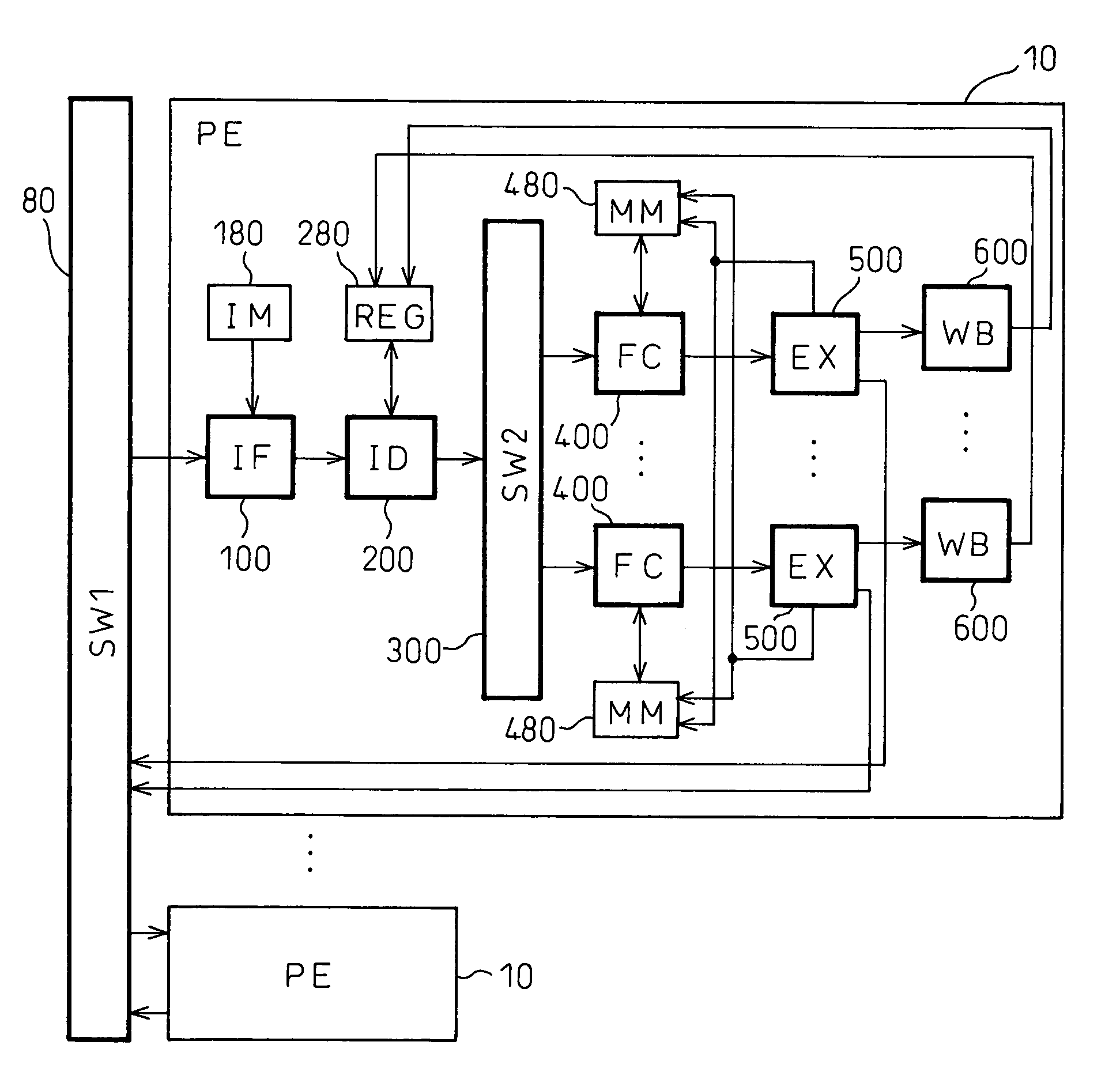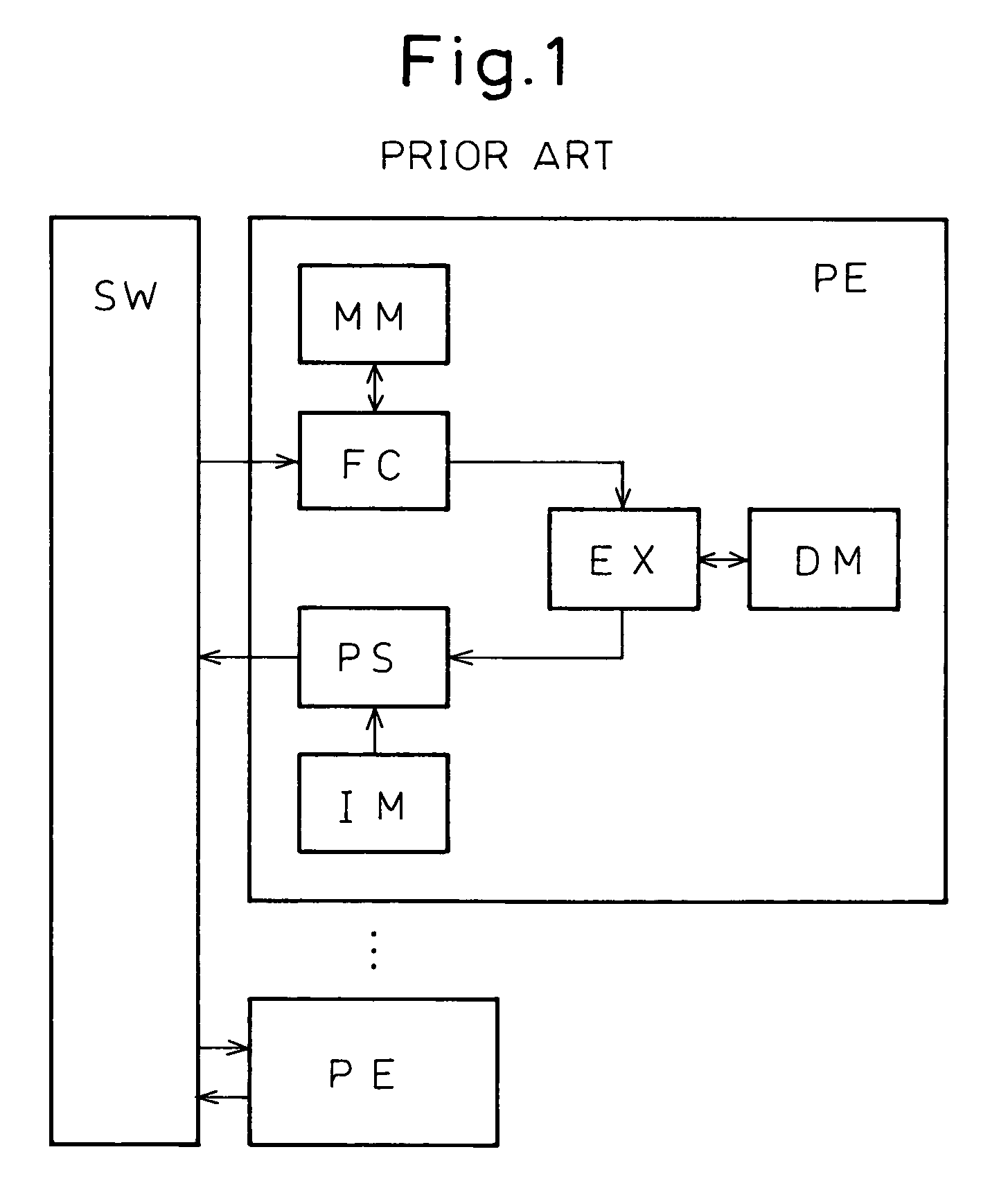Data processor
a data processor and data technology, applied in the field of data processors, can solve the problems of affecting the advantages of the prior art data-driven processor, the sequential processing part of the program becomes a bottleneck, and the instruction data dependencies cannot be processed by pipelining, so as to enhance the efficiency of sequential processing and maintain the effect of parallel processing
- Summary
- Abstract
- Description
- Claims
- Application Information
AI Technical Summary
Benefits of technology
Problems solved by technology
Method used
Image
Examples
Embodiment Construction
[0033]A data processor according to the present invention multiprocesses a data-driven program and a control-driven program, in the same pipeline, on an instruction-by-instruction basis. For this purpose, as shown in FIG. 2, a program is created in such a manner that a part where processing targets can be processed in parallel is implemented using a data-driven program as has traditionally been done, while a sequential processing part where parallel processing is difficult is implemented using a control-driven program in which instructions are arranged in sequence. Instructions in the data-driven program (data-driven instructions) are issued according to their data dependencies, as in the data-driven processor shown in FIG. 1. On the other hand, instructions in the control-driven program (control-driven instructions) are issued in sequence based on a program counter (PC). In the data processor of the present invention, instructions in the data-driven program and instructions in the ...
PUM
 Login to View More
Login to View More Abstract
Description
Claims
Application Information
 Login to View More
Login to View More - R&D
- Intellectual Property
- Life Sciences
- Materials
- Tech Scout
- Unparalleled Data Quality
- Higher Quality Content
- 60% Fewer Hallucinations
Browse by: Latest US Patents, China's latest patents, Technical Efficacy Thesaurus, Application Domain, Technology Topic, Popular Technical Reports.
© 2025 PatSnap. All rights reserved.Legal|Privacy policy|Modern Slavery Act Transparency Statement|Sitemap|About US| Contact US: help@patsnap.com



